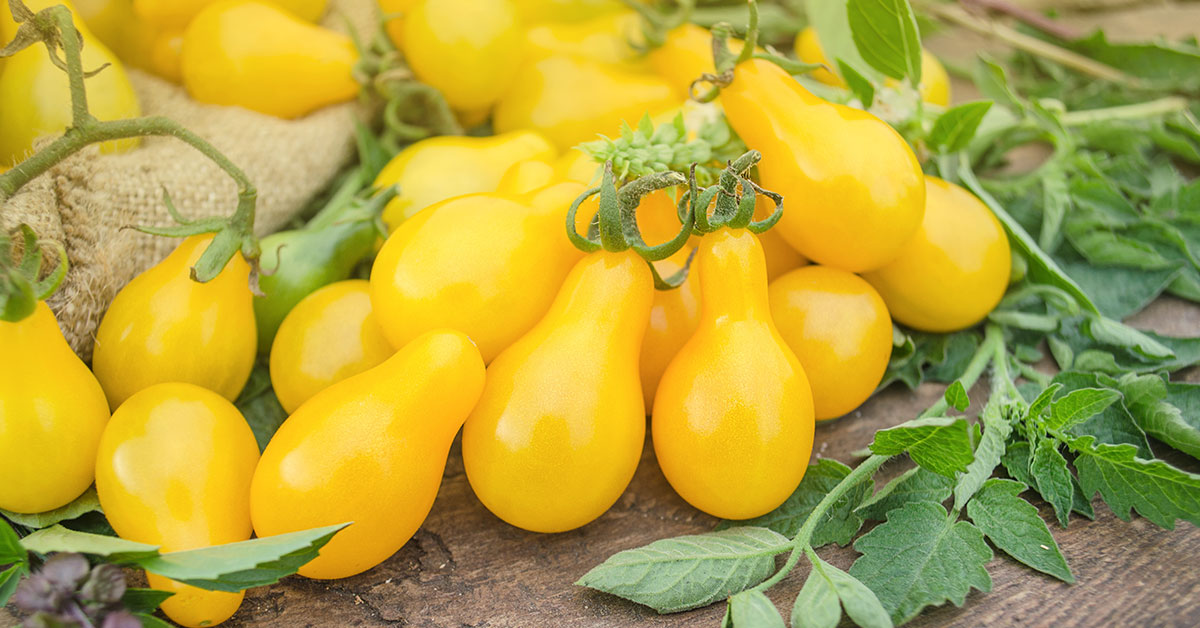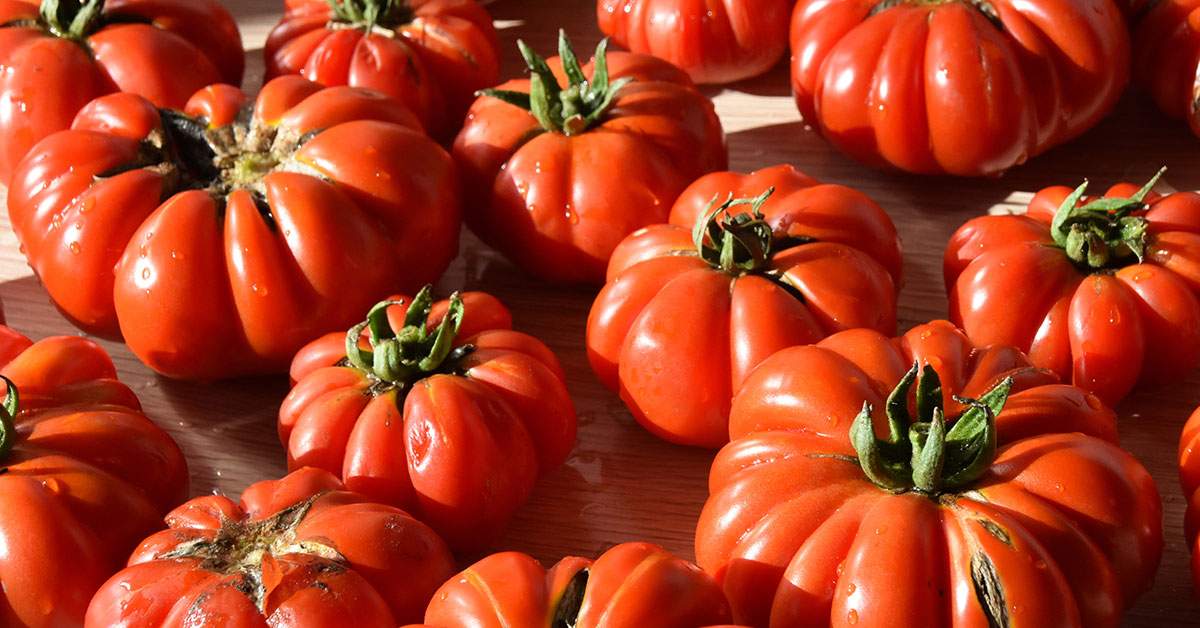Yellow Pear tomatoes are a sweet and juicy variety of heirloom tomatoes that are a unique addition to any garden or dish. Their small, pear-shaped fruits are bright yellow in color and have a delicate, thin skin that makes them perfect for snacking or adding to salads.
These tomatoes have been around for over 200 years and are still popular for their distinct flavor and versatility in the kitchen. In this blog post, we will explore everything you need to know about the Yellow Pear tomato, including its history, characteristics, and how to grow and use them in your cooking.
What is a Yellow Pear tomato?
Yellow Pear tomato is a unique variety of tomato that is known for its small, pear-shaped fruits and bright yellow color. This tomato variety is believed to have originated in Europe and was introduced in the United States in the late 1800s. It is widely grown in home gardens and is a favorite among farmers and chefs alike.
Yellow Pear tomato plants are indeterminate, which means they continue to grow and produce fruit throughout the growing season. The plants can reach a height of six to eight feet and require staking or trellising to support their sprawling vines. They have small, delicate leaves and produce clusters of fruits that can range in size from one to two inches.
The fruits of the Yellow Pear tomato are small and have a distinct pear shape. They have a thin skin and are juicy and sweet with a mild, slightly tangy flavor. The bright yellow color of the fruits makes them a popular choice for salads and garnishes. They also add a pop of color to sauces, salsas, and other dishes.
In addition to their unique appearance and flavor, Yellow Pear tomatoes are also highly nutritious. They are a good source of vitamins A and C, potassium, and fiber. They are also low in calories, making them a healthy addition to any diet.
Overall, Yellow Pear tomatoes are a delicious and unique variety of tomato that are loved by home gardeners, chefs, and food enthusiasts. With their sweet, tangy flavor and bright yellow color, they are a versatile ingredient that can be used in a variety of dishes.
How to start Yellow Pear tomato seeds
Starting tomatoes from seed is a cost-effective and rewarding way to grow your own tomato plants. To begin, choose the tomato varieties that suit your preferences and growing conditions.
Fill seed trays or pots with a lightweight and well-draining seed starting mix, plant the seeds at the recommended depth, and provide adequate moisture and warmth for germination.
Once the seedlings have developed their second set of true leaves, they can be transplanted into larger containers or individual pots. Gradually acclimate the seedlings to outdoor conditions before transplanting them into the garden.
By following these basic steps, you can successfully start tomatoes from seed and enjoy a thriving crop of homegrown tomatoes.
Additional Resource: Our comprehensive guide to starting tomatoes from seed
Growing & care
Transplanting and caring for tomatoes outdoors involves a few essential steps. First, choose a sunny location with well-drained soil. Prior to transplanting, harden off the seedlings by gradually exposing them to outdoor conditions.
Dig a hole slightly larger than the root ball of each seedling and plant them, burying the stem up to the first set of leaves. Water the seedlings thoroughly after transplanting. Provide consistent watering, aiming for 1-2 inches of water per week.
Stake or cage the plants for support and prune indeterminate varieties by removing suckers. Monitor for pests and diseases, taking prompt action if necessary. By following these steps, you’ll set your tomato plants up for healthy growth and a fruitful harvest.
Additional Resource: How to transplant and care for tomatoes outdoors
Common tomato pests and diseases
Tomatoes are susceptible to various pests and diseases that can affect their health and productivity. Some common tomato pests include aphids, tomato hornworms, whiteflies, and cutworms. These pests can cause damage to leaves, stems, and fruit, leading to reduced plant vigor and yield.
Additionally, tomato plants can be affected by diseases such as early blight, late blight, fusarium wilt, and verticillium wilt. These diseases can cause leaf discoloration, wilting, and fruit rot. Proper identification and timely intervention are crucial to effectively manage these pests and diseases and ensure the successful growth of tomato plants.
Additional Resource: Comprehensive list of tomato diseases and pests and how to fix them
Common problems
When it comes to growing Yellow Pear tomatoes, there are a few common problems that gardeners may encounter. Here are some of the most common issues and how to address them:
- Poor Soil Quality: Yellow Pear tomatoes require well-draining soil that is rich in organic matter. If your soil is not suitable, you may need to amend it with compost or other organic materials. Additionally, make sure the soil has a pH between 6.0 and 6.8, which is optimal for tomato plants.
- Overwatering: While Yellow Pear tomatoes need consistent moisture, overwatering can lead to root rot and other issues. Make sure to water your plants deeply once or twice a week, depending on the weather and soil conditions.
- Pest Infestations: Yellow Pear tomatoes are susceptible to a variety of pests, including aphids, spider mites, and whiteflies. To prevent infestations, keep your garden clean and remove any debris or dead plant material. You may also consider using organic pest control methods, such as neem oil or insecticidal soap.
- Disease: Yellow Pear tomatoes can also be affected by various diseases, including blight, wilt, and mosaic virus. To prevent these issues, rotate your crops annually, keep your garden clean, and avoid overhead watering.
By addressing these common problems, you can help ensure a successful Yellow Pear tomato harvest. Happy gardening!
Uses for Yellow Pear tomatoes
Yellow Pear tomatoes are a unique and delicious variety of tomato that is popular among gardeners and food enthusiasts alike. These tomatoes are small, pear-shaped, and have a bright yellow color that is both eye-catching and appetizing. But what are yellow pear tomatoes typically used for?
One of the most common uses for yellow pear tomatoes is in salads. They add a pop of color and flavor to any salad, and their small size makes them easy to incorporate into a variety of recipes. Yellow pear tomatoes also make a great addition to sandwiches and wraps, providing a sweet and tangy burst of flavor.
Another popular use for yellow pear tomatoes is in sauces and salsas. Their unique shape and flavor make them a great choice for adding a little extra something to your favorite tomato sauce recipe. They also work well in salsas, providing a sweet and juicy contrast to spicy peppers and onions.
Yellow pear tomatoes are also a great choice for roasting or grilling. Their small size makes them easy to cook quickly, and their sweet flavor is enhanced by the heat. Roasted or grilled yellow pear tomatoes are a delicious side dish or topping for burgers and other grilled meats.
Overall, yellow pear tomatoes are a versatile and delicious ingredient that can be used in a variety of recipes. Whether you’re adding them to salads, sauces, or grilling them up for a tasty side dish, these little tomatoes are sure to impress.













